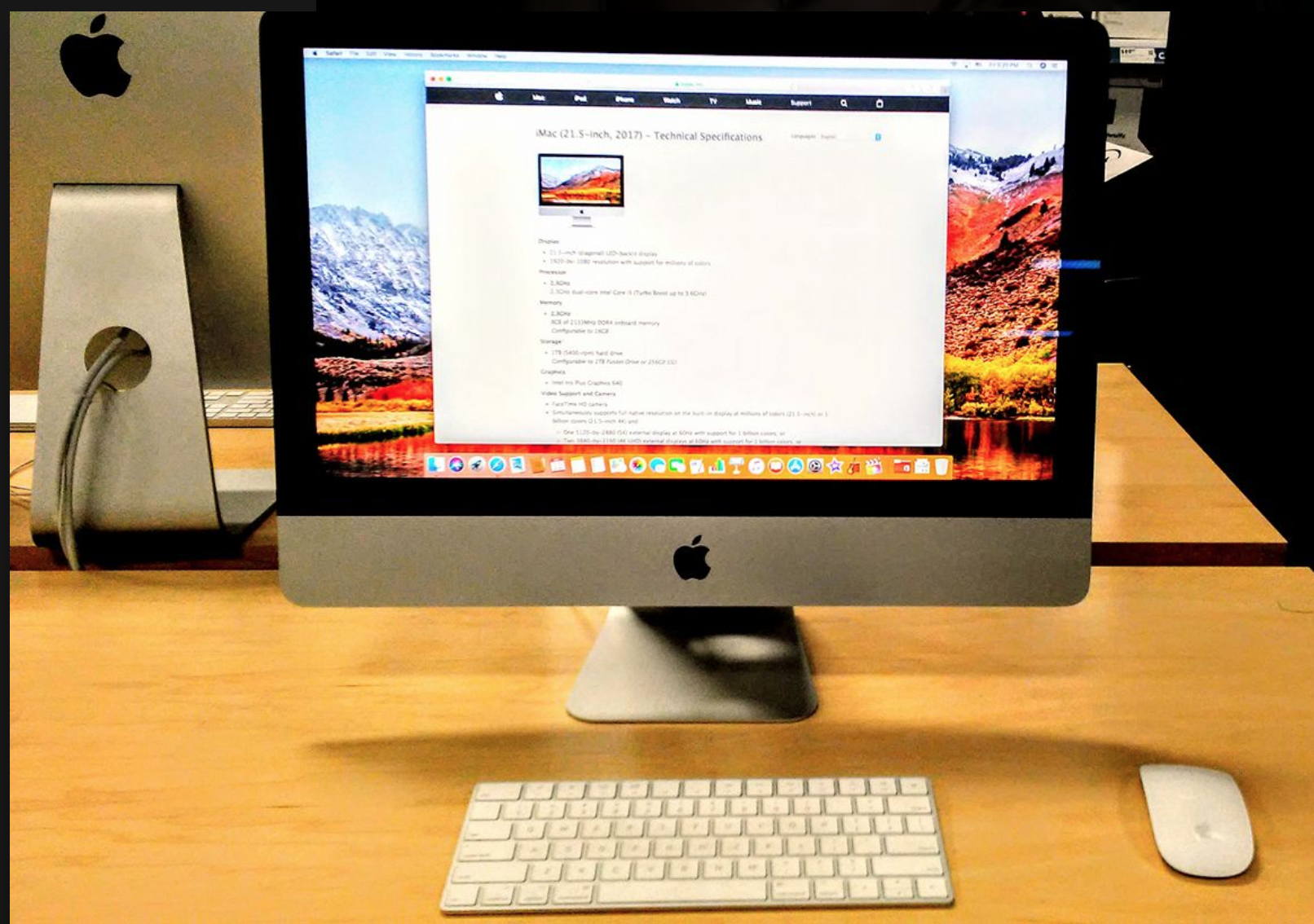2017 iMac or iMacPro? Apple's promised updates to their desktop line had arrived in late 2017. Which one is the right for what we want to use? This might be a no brainer, but based on the specs it really depends on the what it will be used for. I am liking the new iMac, with the same form factor and build as the previous release but with updated processor and video graphics system. The iMac Pro just blows it away, in terms of speed, power and performance. Both also have a 27” Retina 5K 2880p display version which shows crisp, sharp graphics. The iMac (2017) comes in a 21.5" 4K display too for those who don't need a large screen at a more cheaper price. The display is excellent on both models at 500 cd/m2 of luminance that further brightens the IPS panel LCD display. Retouchers and graphics artists will appreciate the displays since it covers the P3 color gamut. The iMac integrates the display with the CPU, saving more space for the keyboard and mouse.

If this comes down to specs, the iMac Pro is way better of course. They both use intel microprocessors with the iMac Pro having a more high end multi-core count. Up to 18c/36t Xeon 2.3 GHz turbo boost @ 4.3 GHz on the iMac Pro versus 4c/8t i7-7700k @ 4.2 GHz (with 4.5 GHz turbo boost) on the iMac (2017). For editing and graphics the higher thread count on the iMac Pro is the best option. Apple now allows higher memory configuration, which allowed me to add up to 32 GB (supports 64 GB) DDR4 on the new iMac (2017). The iMac Pro can go up to 128 GB ECC DDR4. Most iMac users in the past only had up to 16 GB maximum memory, now it supports more. I am much impressed with the iMac Pro video card Radeon ProVEGA 56 or 64 are supported. Storage on both models support fast SSD or a fusion configuration on the iMac (2017). Both come equipped with the basic configuration for WiFi 802.11 ac, even NBase-T (for iMac Pro), giga-ethernet port (both models) and support for USB-C Thunderbolt along with USB 3.1 gen2. Facetime HD camera and audio are also built into both models.
They’re both not cheap. The base starts at $2,299 for the iMac (2017) and the $5,000 for the iMac Pro. Actually the price doesn’t get any less, it gets higher. A spanking professional iMac Pro HEDT configuration with 4 TB SSD, Radeon 64 with 128 GB DDR4 comes to $13,199 at the Apple Store. The more casual user can opt for the iMac at an HEDT configuration of $5,000. Now Macs have never been good at playing games which is likewise the same for the new iMacs. However the iMac Pro is an editor’s dream machine for sure. Producers who work with music will also appreciate the iMac Pro's capabilities. Content creators who don’t need the Pro features of the iMac should be good with just the iMac.
From Geekbench benchmarks the iMacs have impressive baseline scores:
iMac Pro 5016 (single core) 30524 (multi-core)
iMac i7-7700k 5676 (single core) 19332 (multi-core)
Compare to a Windows HEDT (similar configuration to iMac):
PC i7-7700k 6030 (single core) 20536 (multi-core)
Disclaimer: This is an independent review, not sponsored in any way, and are all the opinion of the author. For more details to confirm the facts, do your own research.